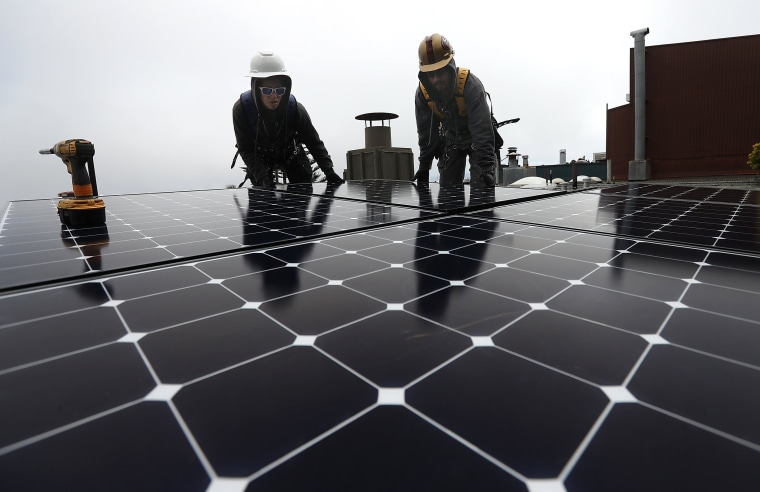Solar panels will be a required feature on virtually every new home built in California, under a policy advanced Wednesday by California regulators — again putting the state in the forefront of government controls over climate-warming carbon emissions.
The California Energy Commission voted unanimously, 5-0, to recommend energy efficiency standards that are set to be added to state building regulations later this year, effecting all construction after Jan. 1, 2020. The rules will make California the first state in the nation to require solar panels on new homes.
"This will be nothing short of historic for our state and for our country," said Bernadette Del Chiaro, executive director of the California Solar & Storage Association, an industry group. "California is once again betting on the sun and putting real policy behind grand vision."
The requirement will apply to single-family homes and to apartment and condominium complexes of three stories or less. Solar installations have become so cost effective that they are included in more than 15,000 homes built each year in California, even without the directive from the state. In 2020 and beyond that number promises to increase to 80,000, the number of homes built each year in the Golden State.
Crucial in moving the proposal forward was a finding that solar power would be cost effective in all climate zones in the state. The average estimated cost of a solar system is $9,500, or $40 a month when amortized over a 30-year mortgage. But the systems are projected to save customers an average of $80 a month on their utility bills.
“It’s become more and more attractive to consumers,” said Kelly Knutsen, director of technology advancement for the solar industry group. “Whenever there is demand you want to meet that demand.”
While building industry organizations did not try to block the new rules, they expressed concern about driving up home prices and said they preferred a slower phase-in of the new requirements. A leading building organization said it appreciated the fact that the rules would allow for smaller installations or waivers in cases in which space is limited or neighboring structures shade rooftops.
The California Building Industry Assn. also praised another part of the new regulation, which gives energy credit to homes that employ battery storage technology. The innovation “will allow the homeowner to capture the cheaper electricity produced by the rooftop solar panels during the middle of the day and keep that power on-site for use in the early evening hours when electrical rates go up,” said Bob Raymer, technical director of the building association.
The solar panel rule next goes before the California Building Standards Commission, which typically adopts recommendations from the energy commission. The building group is expected to take up the matter in October or November.
